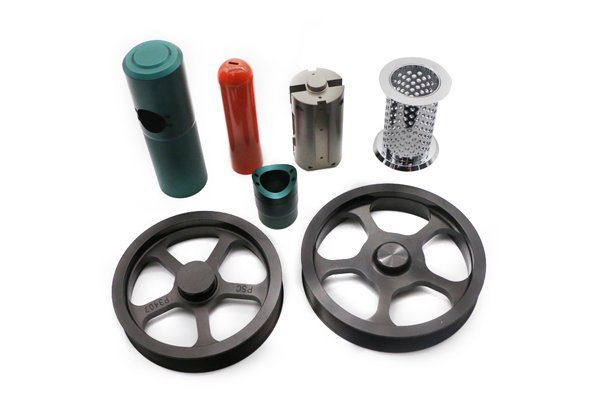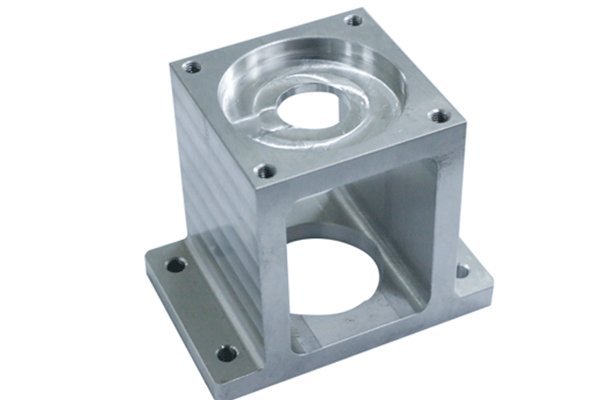Did you know that the global plastic prototyping market is projected to reach $480 billion by 2027? As industries embrace innovative technologies and seek faster product development cycles, CNC (Computer Numerical Control) turning has emerged as a game-changer especially in the realm of plastic prototyping. But why is this method gaining traction? In this blog, we’ll dive deep into the applications and benefits of CNC turning for plastic material prototyping and explore how this advanced machining technique can optimize your manufacturing processes.
Understanding CNC Turning
CNC turning is a subtractive manufacturing process that uses computer-controlled lathes to precisely cut and shape materials into desired forms. With the ability to work with a wide range of materials, including plastics, CNC turning excels in creating intricate and detailed designs that are essential for modern engineering applications.
How CNC Turning Works
In CNC turning, the workpiece is mounted on a rotating spindle while a cutting tool is fed into the material to shape it according to the desired specifications. The process allows for continuous cutting, which can produce complex geometries with high precision and accuracy. Key features of CNC turning include:
The Importance of Prototyping in Product Development
In today’s competitive market, prototyping is crucial—acting as a bridge between conceptual designs and final products. Effective prototyping allows companies to:
CNC turning is particularly suited for plastic prototyping as it can accurately create prototypes that closely mirror the final product, ensuring that all specifications are met.
Applications of CNC Turning in Plastic Prototyping
The aerospace industry demands high durability and lightweight components. CNC turning can create precise components such as housing parts, fixtures, and brackets from high-performance plastics like PEEK (polyether ether ketone) and nylon. These materials provide excellent strength-to-weight ratios, making them ideal for airplane components.
CNC turning has significant applications in the medical field. Prototyping medical devices, such as surgical instruments and implantable devices, requires compliance with stringent regulations. Using CNC turning, manufacturers can produce high-precision plastic parts that meet biocompatibility and safety standards.
In the automotive industry, rapid prototyping of plastic components such as dashboards, panels, and connectors is essential. CNC turning allows for the production of intricate parts that undergo rigorous testing for durability and performance. This minimizes risks and streamlines the transition from prototype to production.
CNC turning is widely utilized in the consumer products sector for creating prototypes of items such as housings, containers, and toys. The flexibility and precision of CNC turning enable manufacturers to create aesthetically pleasing and functional designs that cater to the demands of consumers.
Prototyping electronic housings and components is vital for the electronics industry. CNC turning can produce intricate designs that encapsulate electronic parts while providing proper ventilation and aesthetics. Using plastics like ABS (acrylonitrile butadiene styrene) allows for lightweight, durable, and visually appealing products.
Benefits of CNC Turning for Plastic Prototyping
One of the standout features of CNC turning is its ability to produce high-precision parts. This accuracy is crucial for prototyping, where even minute variations can impact a design’s functionality. CNC machines operate with tolerances of up to ±0.001 inches, ensuring that prototypes closely match final specifications.
Traditional prototyping methods can be time-consuming, with lengthy setups and adjustments. CNC turning allows for rapid machining, significantly reducing lead times. The automated nature of CNC machines means that once a design is inputted, the prototyping process can proceed without significant downtime.
While the initial investment in CNC technology may seem substantial, the long-term benefits yield impressive returns on investment. CNC turning minimizes waste, as it removes only the necessary material to achieve the desired shape. As fewer resources are needed to produce prototypes, overall manufacturing costs decrease.
CNC turning is compatible with various plastics, allowing manufacturers to select the most suitable materials for their applications. For instance, engineers can choose from materials like PET (polyethylene terephthalate), PC (polycarbonate), or PVC (polyvinyl chloride) depending on factors such as UV resistance or chemical exposure.

One of the most noteworthy advantages of CNC turning is its adaptability. Should design changes arise, CNC programs can be modified easily to reflect new specifications, allowing engineers to test alternative designs without having to invest drastically in new molds or tooling.
CNC machines come equipped with advanced software that monitors and maintains quality control throughout the prototyping process. By ensuring that parts are manufactured within specified tolerances, manufacturers can identify errors early and address issues before moving to mass production.
The CNC Turning Process for Plastic Prototyping
Step 1: Design Creation
Begin with a 3D CAD model that represents the object to be prototyped. This model serves as the blueprint for the CNC machine. Designers should consider factors such as material limitations, tool paths, and dimensions during this phase.
Step 2: CNC Program Development
Once the design is finalized, it is translated into a CNC program using CAM (Computer-Aided Manufacturing) software. This program dictates the tool’s movements, cutting speeds, and feed rates to ensure optimal production quality.
Step 3: Material Selection
Selecting the right plastic material is crucial for achieving desired properties in the prototype. Factors like strength, flexibility, and heat resistance should all be considered. Popular options include:
Step 4: Machining Process
The actual machining process begins with mounting the plastic stock onto the CNC lathe. The spindle rotates the material while the cutting tool, based on the CNC program, carefully removes the excess material to shape the part.
Step 5: Surface Finishing
After turning, the prototypes may require additional surface treatment processes such as sanding, polishing, or coating to achieve the desired finish. This step is essential for applications where aesthetic quality is essential.
Step 6: Quality Inspection
Finally, a thorough quality inspection ensures that the prototype meets design specifications and tolerances. Techniques such as visual inspections and measurements aid in identifying any discrepancies before moving on to mass production.
Addressing Common Concerns in CNC Turning for Plastics
Selecting the right plastic for a specific application can be daunting, especially as each material has unique properties. It is essential for engineers to research and consult with material specialists to find the most suitable options.
Plastic materials can cause tool wear, affecting accuracy. Regular inspections and timely maintenance of cutting tools will extend tool life and optimize performance. Utilizing high-quality tools designed specifically for plastic can also mitigate wear and tear.
While CNC turning is cost-effective in the long run, initial setup costs can be significant. It’s crucial for companies to analyze their projects carefully, evaluating prototyping needs and production volumes to find the most economical approach.
The environmental impact of plastic materials often raises concerns in prototyping processes. As recycling technologies advance, many manufacturers are seeking eco-friendly plastics or implementing sustainability strategies alongside CNC turning practices.
In conclusion, CNC turning stands out as a revolutionary solution for plastic material prototyping across diverse industries. Whether in aerospace, medical devices, or consumer products, the precision and versatility of CNC turning enable rapid and cost-effective product development cycles.
Through extensive applications, significant benefits, and a detailed understanding of its processes, manufacturers can leverage CNC turning to enhance their prototyping capabilities effectively. As industries continue to evolve, the role of CNC turning in plastic prototyping will undoubtedly expand, cementing its position as a vital tool for innovation.
Investing time and resources into understanding CNC turning not only enables efficient prototyping but also fosters an adaptive manufacturing environment ready to face the challenges of tomorrow. So, as you contemplate the future of your products, think critically about the potential of CNC turning to elevate your prototyping processes and drive your success.
—
Would you like more information on CNC machining or specific applications? Feel free to engage with your thoughts and questions!






